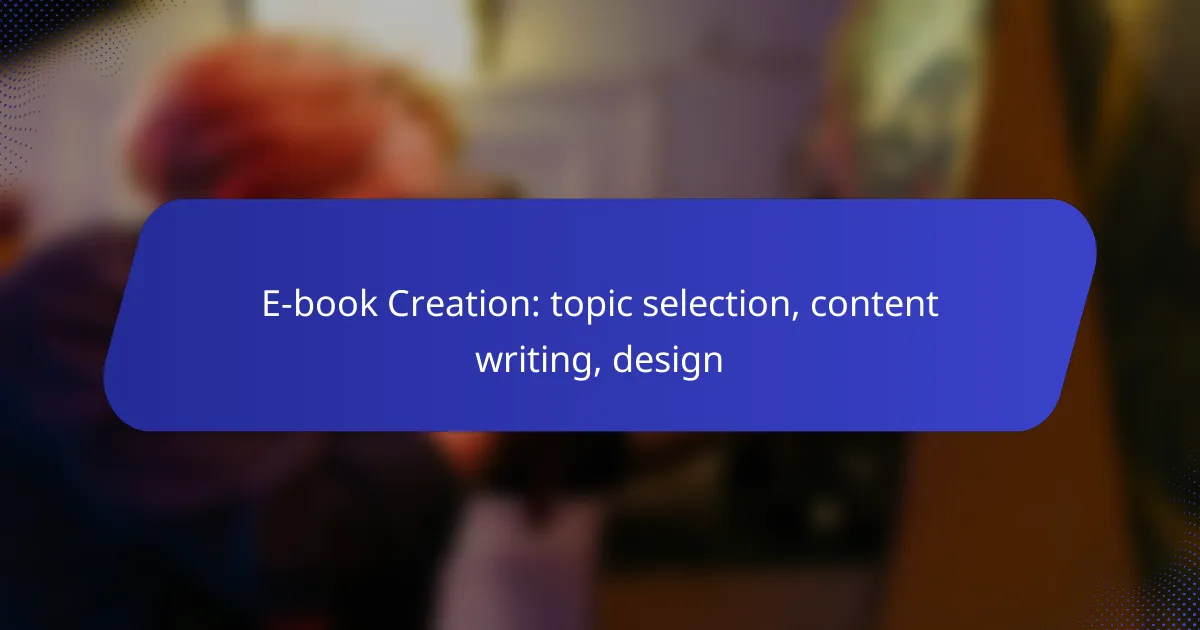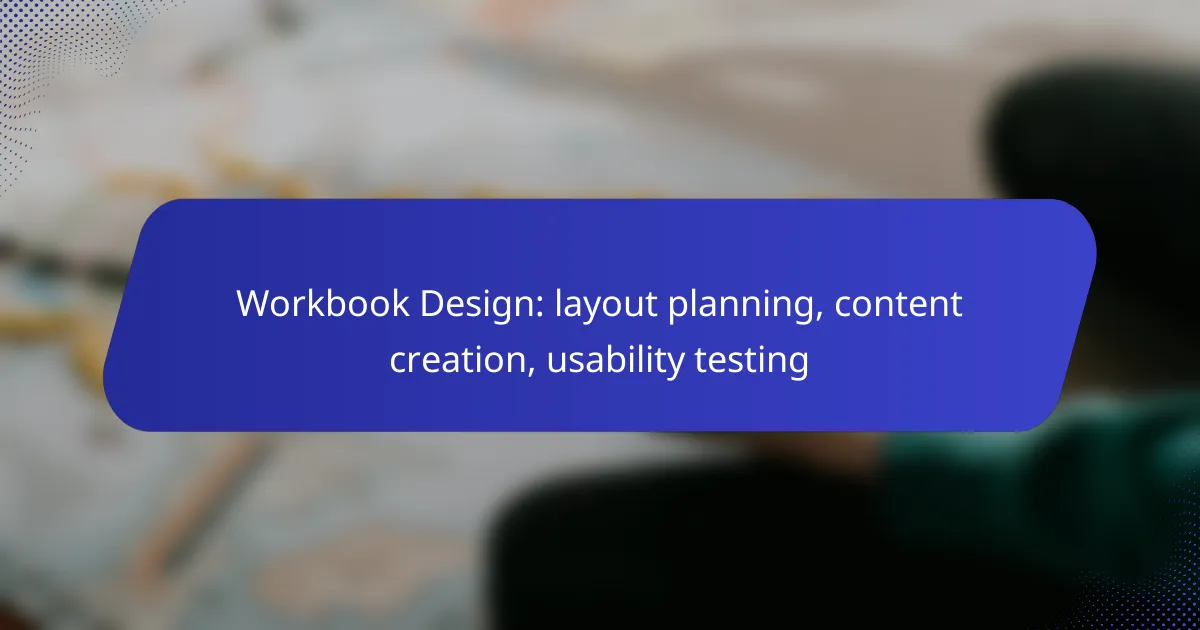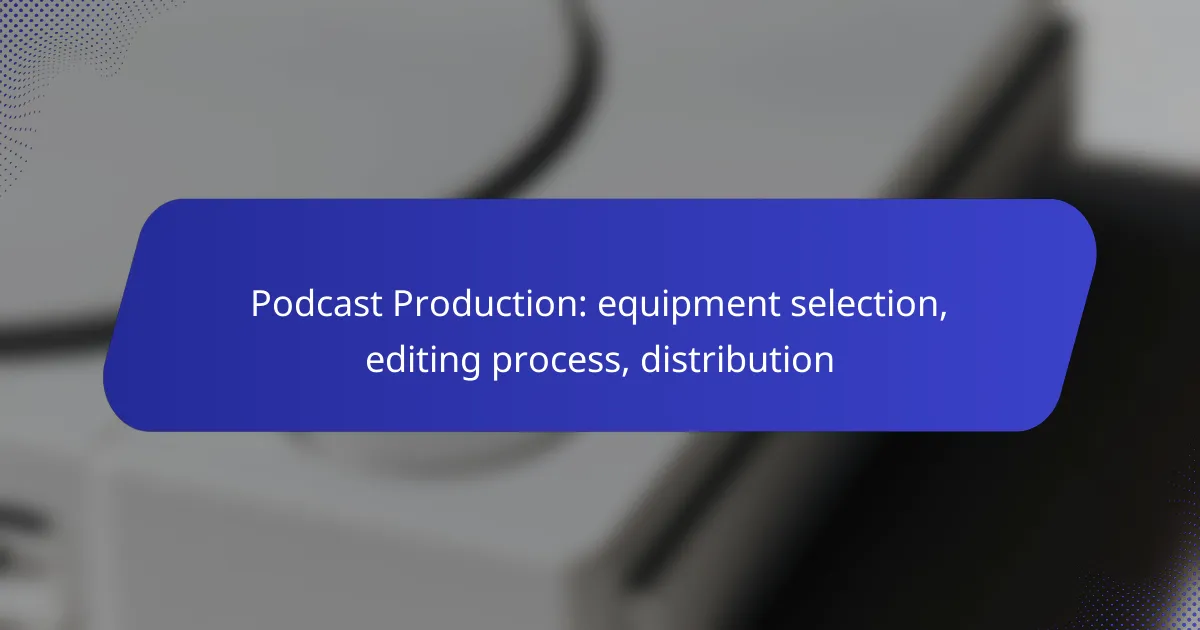Creating an e-book begins with selecting a compelling topic that resonates with your audience and showcases your expertise. Once the topic is established, effective content writing strategies and thoughtful design elements come into play, ensuring that your e-book is not only informative but also visually appealing and engaging for readers. By focusing on these key aspects, you can produce a high-quality e-book that stands out in a crowded market.

How to select a topic for an e-book?
Selecting a topic for an e-book involves understanding your audience’s interests, analyzing current trends, and leveraging your own expertise. A well-chosen topic not only engages readers but also positions you as a credible source in your field.
Identify target audience needs
Understanding your target audience is crucial for selecting an e-book topic. Start by identifying their pain points, interests, and preferences through surveys, social media interactions, or online forums. This insight will help you choose a topic that resonates with them.
Consider creating a reader persona that outlines demographics, interests, and challenges. This will guide your content creation and ensure it addresses the specific needs of your audience.
Analyze trending subjects
Keeping an eye on trending subjects can significantly influence your e-book topic selection. Use tools like Google Trends, social media hashtags, and industry news to identify what topics are currently gaining traction.
Look for subjects that not only interest you but also have a growing audience. This can include emerging technologies, popular self-help themes, or niche hobbies. Aim for topics that have a balance of interest and longevity to ensure your e-book remains relevant.
Evaluate personal expertise
Your personal expertise plays a vital role in topic selection. Choose a subject where you have substantial knowledge or experience, as this will enhance your credibility and make the writing process smoother.
Consider your professional background, hobbies, and passions. If you can combine your interests with audience needs and trending subjects, you will create a compelling e-book topic that you are excited to write about.
Research competition
Analyzing the competition helps you understand what topics are already covered and where there may be gaps. Look for existing e-books in your chosen area and assess their strengths and weaknesses.
Identify unique angles or subtopics that competitors may have overlooked. This can give you a competitive edge and help you position your e-book as a fresh resource in the market.
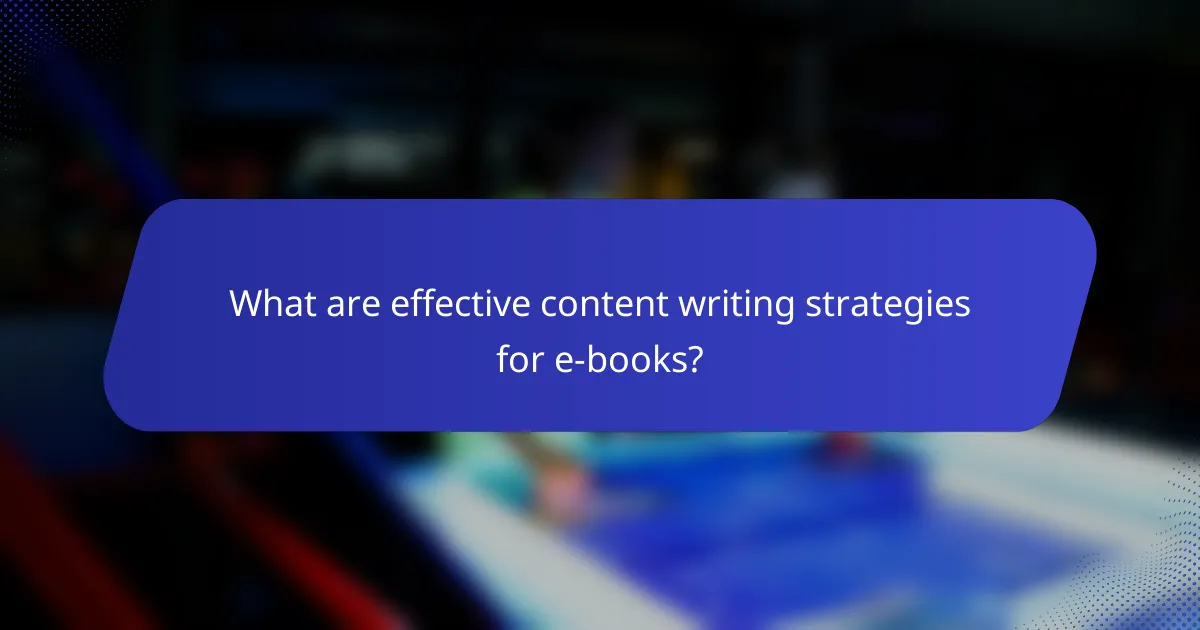
What are effective content writing strategies for e-books?
Effective content writing strategies for e-books include planning your chapters, employing storytelling techniques, integrating expert insights, and ensuring a consistent tone. These strategies enhance engagement and clarity, making your e-book more appealing to readers.
Outline key chapters
Creating a clear outline is essential for structuring your e-book. Start by identifying the main topic and breaking it down into key chapters that logically flow from one to the next. Each chapter should cover a specific aspect of the topic, allowing readers to easily follow along.
Consider using bullet points to list chapter titles and subtopics. This not only helps in organizing your thoughts but also serves as a roadmap for your writing process. Aim for a balanced number of chapters, typically between five to ten, depending on the complexity of your subject.
Utilize storytelling techniques
Incorporating storytelling techniques can significantly enhance the reader’s experience. Use anecdotes, case studies, or personal experiences to illustrate your points and make the content relatable. This approach helps to create an emotional connection with the audience.
Additionally, consider structuring your e-book like a narrative, with a clear beginning, middle, and end. This can involve introducing a problem, exploring solutions, and concluding with actionable insights. Engaging stories can keep readers interested and encourage them to continue reading.
Incorporate expert interviews
Including expert interviews adds credibility and depth to your e-book. Reach out to professionals in your field and ask for their insights or opinions on relevant topics. This not only enriches your content but also provides readers with diverse perspectives.
When presenting interviews, consider using a Q&A format or summarizing key points to maintain clarity. Ensure that the experts’ credentials are highlighted to establish authority. This approach can also encourage readers to trust your content more, knowing it is backed by knowledgeable sources.
Maintain consistent tone and style
Consistency in tone and style is crucial for maintaining reader engagement throughout your e-book. Decide on a voice—whether formal, conversational, or somewhere in between—and stick to it across all chapters. This helps create a cohesive reading experience.
To achieve this, develop a style guide that outlines your preferred vocabulary, sentence structure, and formatting. Regularly review your writing to ensure adherence to these guidelines. A consistent tone not only enhances readability but also reinforces your brand identity as an author.

How to design an e-book for maximum impact?
Designing an e-book for maximum impact involves creating a visually appealing layout, incorporating engaging visuals, and ensuring readability across devices. A well-designed e-book not only captures attention but also enhances the reader’s experience, making the content more effective.
Choose the right layout
Selecting the appropriate layout is crucial for guiding readers through your e-book. Consider using a clean, organized structure that allows for easy navigation, such as a table of contents and clear chapter headings. A common approach is to use a two-column layout for text-heavy pages, which can help break up large blocks of text.
Experiment with different formats, such as single-page versus double-page spreads, to see what works best for your content. Ensure that your layout is consistent throughout the e-book to maintain a professional appearance.
Incorporate engaging visuals
Visual elements like images, infographics, and charts can significantly enhance the appeal of your e-book. Use high-quality visuals that complement your text and help illustrate key points. Aim for a balance between text and visuals; too many images can distract from the content, while too few can make it dull.
Consider using visuals to break up lengthy sections of text, making the reading experience more dynamic. Tools like Canva or Adobe Spark can help you create custom graphics that align with your e-book’s theme.
Optimize for readability
Readability is essential for keeping your audience engaged. Use a legible font size, typically between 11-14 points, and choose fonts that are easy to read on screens, such as Arial or Georgia. Maintain sufficient contrast between text and background colors to ensure clarity.
Break up text into shorter paragraphs and use bullet points or numbered lists to highlight key information. This approach makes it easier for readers to scan the content and find important details quickly.
Ensure mobile compatibility
With a significant number of readers accessing e-books on mobile devices, ensuring compatibility is vital. Design your e-book to be responsive, meaning it adjusts to different screen sizes without losing functionality or readability. Test your e-book on various devices to identify any layout or formatting issues.
Consider using formats like EPUB or MOBI, which are widely supported by e-readers and mobile devices. This will help ensure that your e-book looks great and functions well, regardless of how it’s accessed.
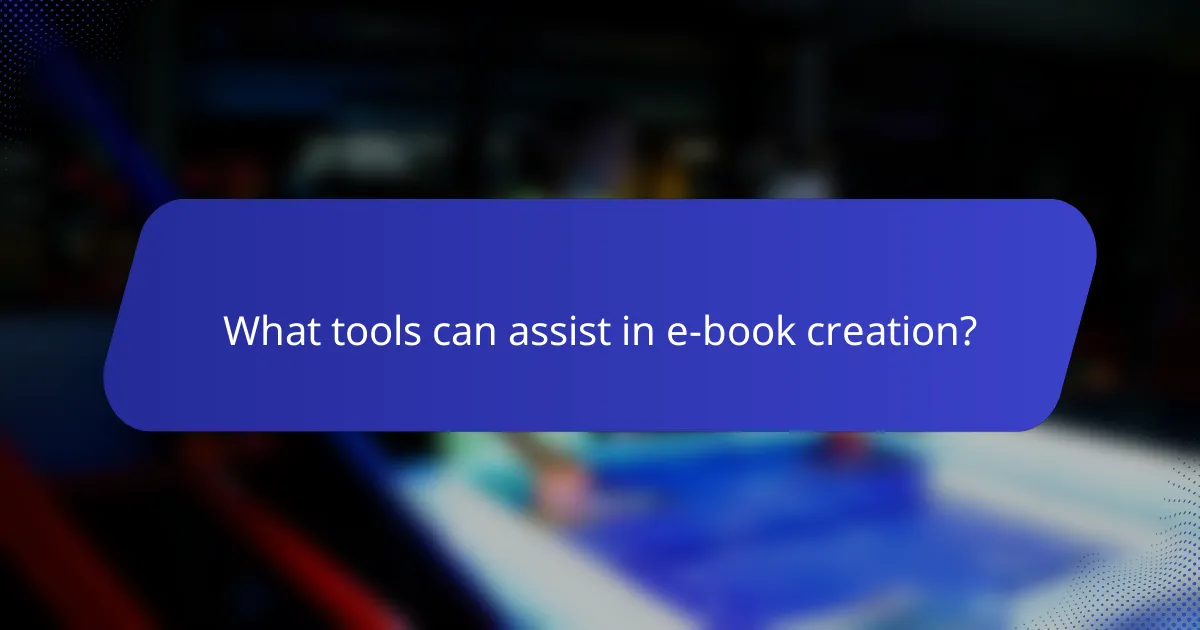
What tools can assist in e-book creation?
Several tools can streamline the e-book creation process, enhancing design, writing, and layout. Utilizing the right software can significantly improve efficiency and the overall quality of the final product.
Canva for design
Canva is a user-friendly graphic design tool that allows you to create visually appealing e-book covers and interior layouts. With a wide range of templates and design elements, you can customize your e-book’s look without needing advanced design skills.
To get started, choose a template that fits your theme, then adjust colors, fonts, and images to match your content. Keep in mind that maintaining a consistent style throughout your e-book is crucial for a professional appearance.
Scrivener for writing
Scrivener is a powerful writing software designed for long-form content, making it ideal for e-books. It offers features like a corkboard for organizing ideas, a split-screen view for research and writing, and easy formatting options for exporting your work.
When using Scrivener, take advantage of its outlining capabilities to structure your chapters effectively. This can help you stay focused and ensure a logical flow of information throughout your e-book.
Adobe InDesign for layout
Adobe InDesign is a professional desktop publishing software widely used for creating complex layouts, making it suitable for e-books that require intricate designs. It offers advanced typography controls, image handling, and the ability to create interactive elements.
For best results, familiarize yourself with InDesign’s features, such as master pages for consistent layout and styles for text formatting. Be mindful of file sizes when exporting your e-book, especially if you plan to distribute it digitally.
